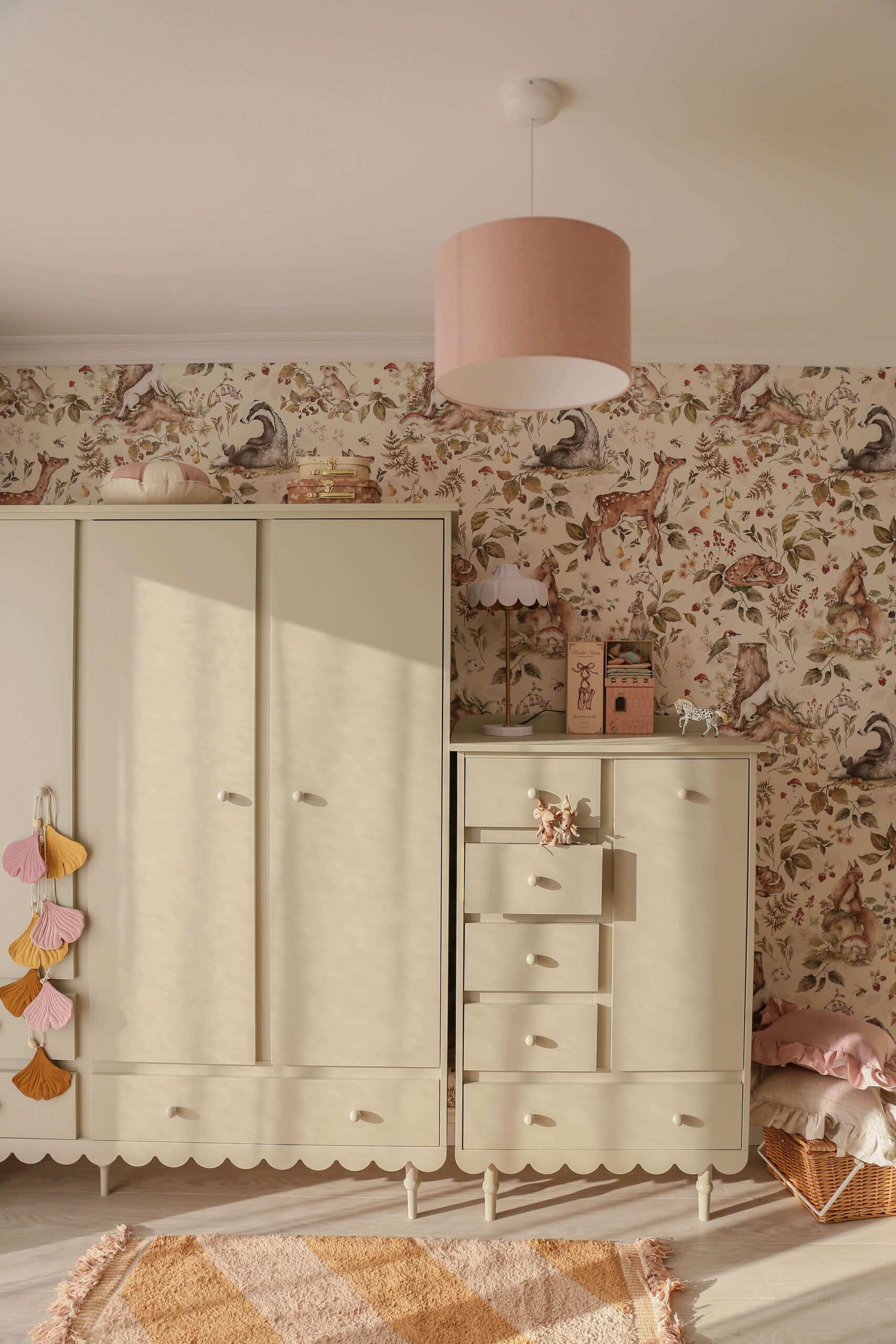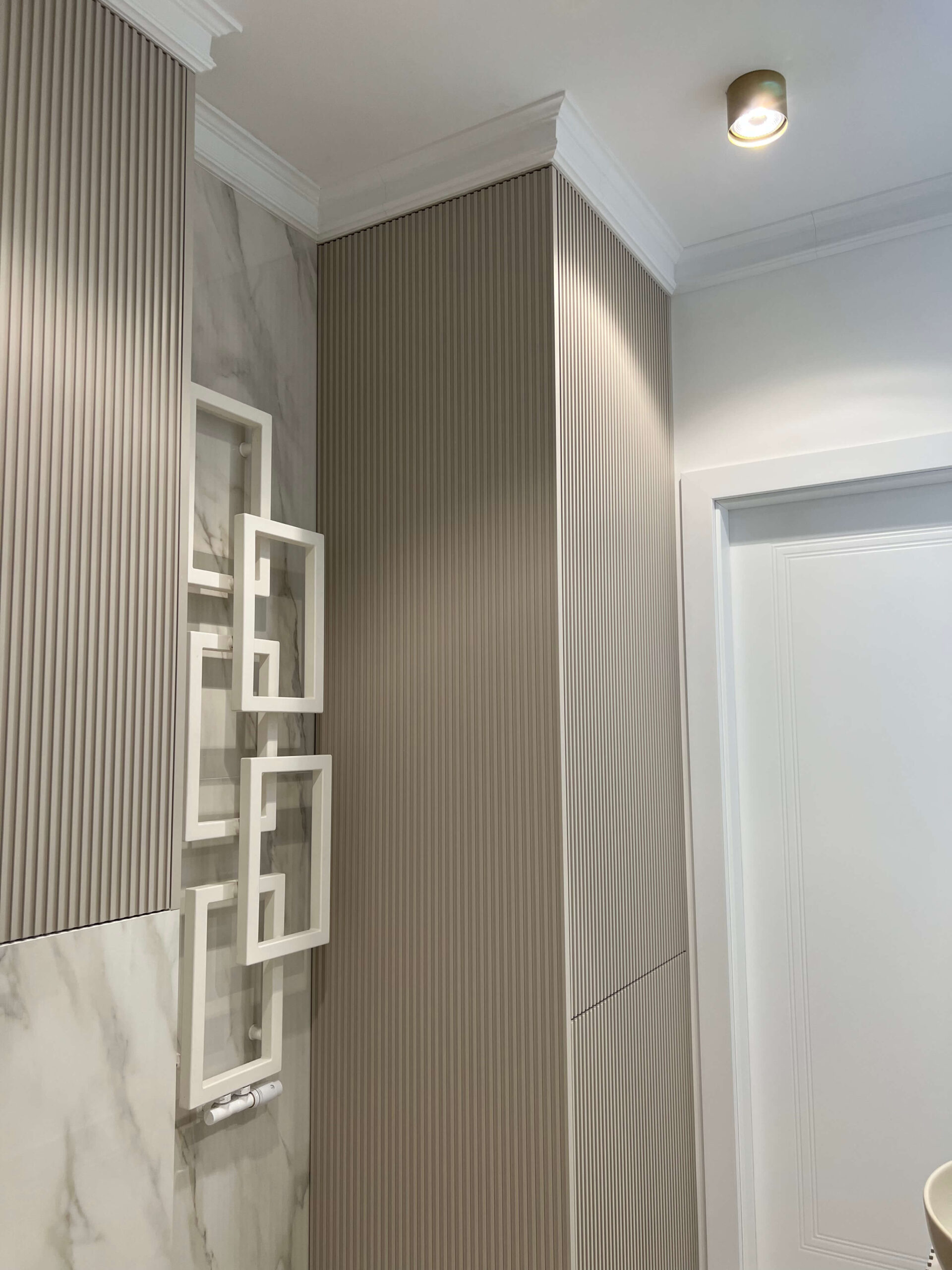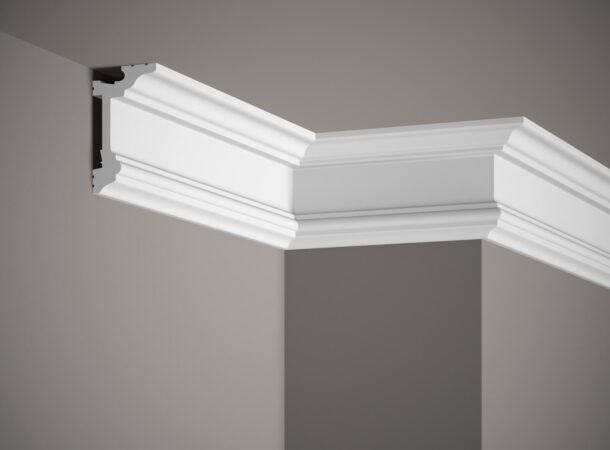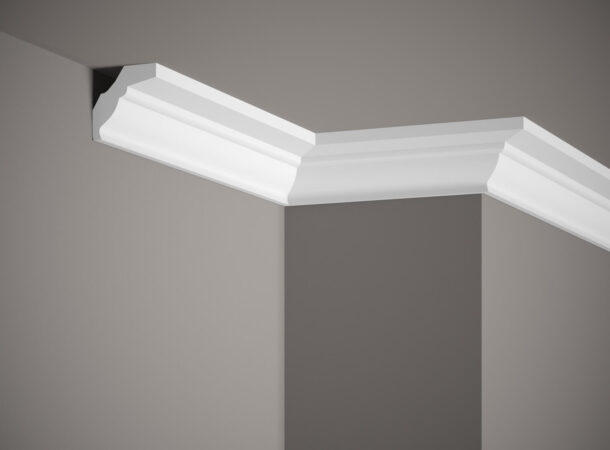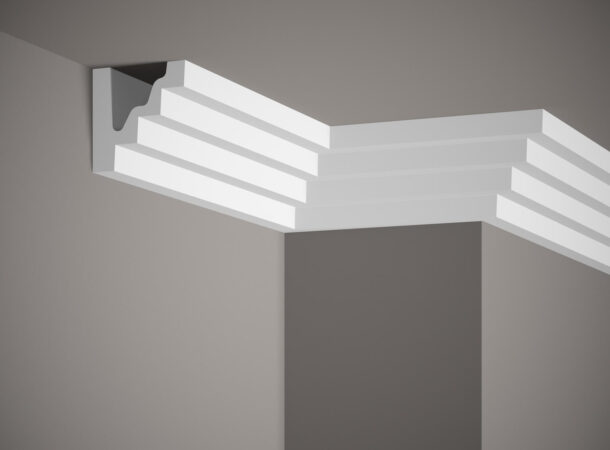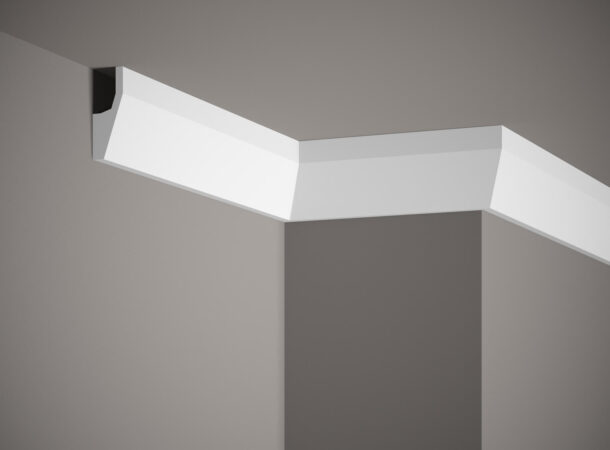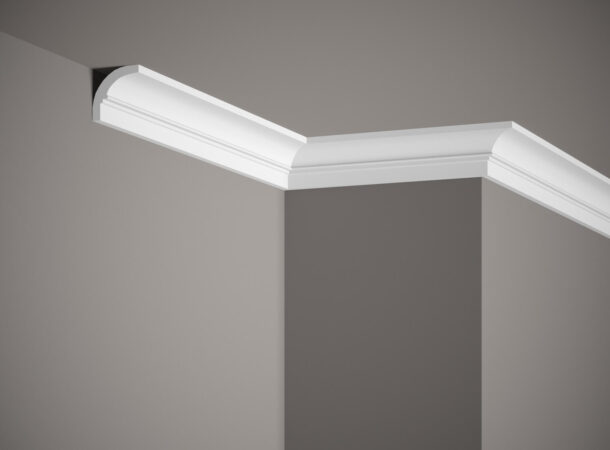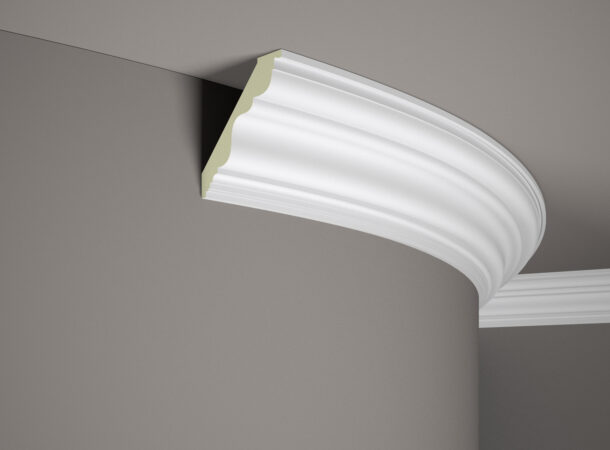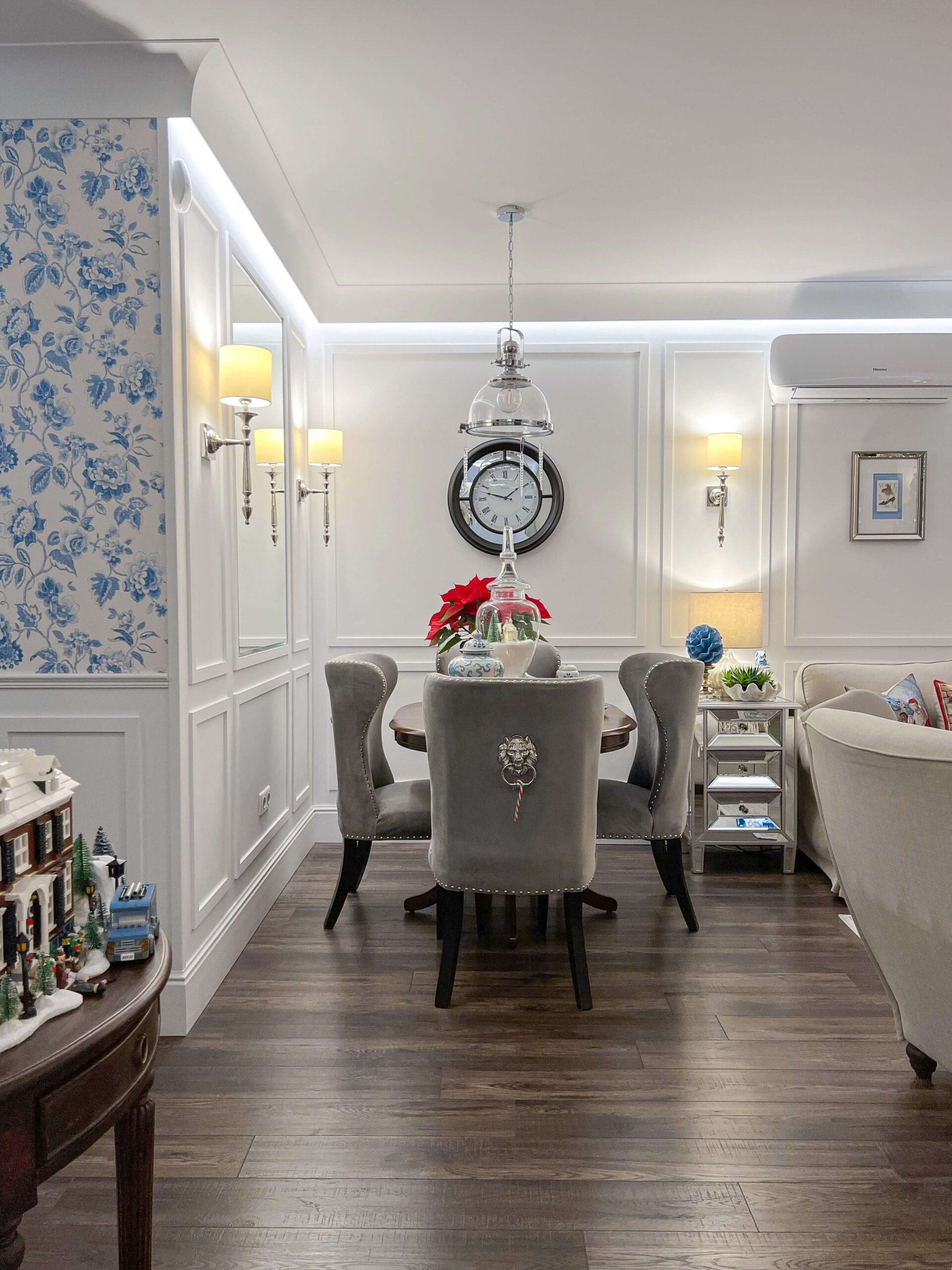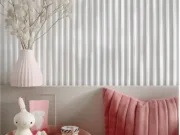Types of ceiling strips and their applications
Ceiling strips are an aesthetic element of interior design that make our space immediately look much more refined and well-thought-out. Properly selected, they not only emphasize the style and aesthetics of the room, but also introduce a three-dimensional element to the often neglected ceiling surface. There are various types of ceiling strips available on the market, and each of them has different properties and applications.
From classic plaster strips, through light and easy-to-install Styrofoam strips, to durable and elegant polyurethane ones – the choice is wide. Another aspect is shapes and finishes. Would a simple form or one with classic decorations be better? What if we have irregular, curved or rounded walls? Choosing the right ceiling strips may seem a challenge, but it is an essential element when composing a harmonious interior.
Choosing moldings can be problematic, so we have prepared a compendium of knowledge about ceiling stucco that will help you choose moldings that match your interior. In our article, we will try to present a compendium of knowledge about different types of ceiling moldings that will help you make the best choice for your space. From decorative functions to practical aspects of hiding installations – with our guide you will easily find skirting boards perfectly suited to your needs and preferences.
Ceiling strips – what material to choose?
Choosing the right material for ceiling strips is the first and most important decision that affects both the aesthetics and functionality of the space. Will the stucco be installed in the kitchen, living room, or maybe we will use it to decorate the bathroom? There are various materials available on the market, and each of them has its advantages and disadvantages.
- Plaster strips are valued for their natural, classic appearance and the ability to be used even on building facades. They are a good choice for traditional, stylized or historical interiors, where details and maintaining the true spirit of classic architectural solutions are important. Their main disadvantages, however, are their high weight, which complicates installation and requires the employment of experienced specialists to carry out the installation.
- Wooden strips bring warmth and naturalness to the interior. They are perfect for rustic and cottage styles. They are relatively durable and easy to process, but their main disadvantage is their susceptibility to deformation caused by changes in humidity. They are not recommended for humid places such as basements or bathrooms. They require additional impregnation or surface protection with special oil.
- HDF strips (high density, compressed wood fibers) are ideal for painting thanks to their smooth surface. Their disadvantage, however, is lower resistance to mechanical damage compared to wood. Unfortunately, due to the material, they can also be susceptible to water and it is not recommended to install them in a high-humidity environment.
- Styrofoam strips are an economical and light solution that allows for easy installation. Water resistant, but they are much less durable than strips made of other materials and can be easily damaged under the pressure of fingers.
- Polymer strips are made of polymer material, so just like Styrofoam, they are light and moisture-resistant, but they are much more durable and do not deform so easily under pressure. Their disadvantage may be a slightly higher price compared to polystyrene or HDF strips.
Mardom Decor ceiling strips are stucco made of high-quality ProFoam® polymer. They are light, which makes it easy to install even tall models at different heights. They are resistant to moisture and UV radiation, which makes them an ideal choice for any room, including kitchens and bathrooms. Their unique structure allows you to create detailed decorations, offering unique decorative possibilities – the strips come in many finishes, from minimalist models to ornamental, small works of art. The ProFoam® material is also resistant to most mechanical damage, which makes these strips a long-term investment in the aesthetics and functionality of any interior.
Traditional vs. modern ceiling strips: Which ones suit your style?
Choosing the right ceiling strip can significantly influence the final effect of interior design. Not every ceiling strip will suit every interior design style, so it is worth considering which model will emphasize the character of your room. Here are some suggestions for the most popular interior styles.
For lovers of the glamorous style, richly decorated strips, full of ornamental floral motifs and Roman patterns, will be the perfect choice. In this case, the rule “the more, the better” applies to strips. The stucco will add splendor to the room and will harmonize harmoniously with the wall filled with impressive decorations, emphasizing the elegant arrangement.
In the case of the Japandi style, which combines Scandinavian simplicity with Japanese minimalism, minimalist, simple models will work best. In this aesthetic, the ceiling strip will not be a decorative element mounted around the perimeter of the room, but rather will work as a discreet cover for a curtain rod. Thanks to their special structure, Mardom Decor ceiling strips can be used to create such a mask (then it will be a ceiling strip for curtains), which will allow you to hide any unnecessary installation elements, maintaining the purity and consistency of the arrangement.
The art deco style surprises, plays with form and color contrast. Futuristic shaped strips will work great in such interiors and will add character to the entire arrangement. The strips can be painted in an intense color, matching them to the wall in an equally vivid shade, which will create a coherent and effective look of the room.
However, in the Scandinavian style, which values minimalism, simplicity and functionality, the best choice is simple, but definitely not as ascetic as in Japan, models of skirting boards. When choosing ceiling strips for such interiors, it is worth paying attention to their profile and dimensions. Larger models will allow you to cover old stucco without having to tear it off, and specially profiled ones can hide cables or allow for additional installation of lighting on the wall, which fits perfectly into the practical approach typical of this style.
“Rigid” traditional or flexible Flex products?
The choice between traditional “rigid” products and flexible strips depends on the installation location, or more precisely, the shape of the surface to which the strips will be attached. Traditional, “rigid” ceiling moldings work best on even and flat surfaces, while flexible ceiling moldings offer greater versatility due to their flexibility.
The flexible models available in the Mardom Decor offer are called Flex – made of flexible polyurethane, they can be bent at any angle, which allows you to create smooth transitions between different surfaces in the room. You can also easily install them on an uneven or rounded surface. Their installation is intuitive and does not differ significantly from the application of rigid strips. However, it is worth remembering that flexible strips require painting after sticking to the wall, which prevents the paint from cracking and guarantees an aesthetic appearance. The Flex flexible strips available in the Mardom Decor offer are therefore a perfect solution for those who value the versatility and ease of adapting stucco to the individual needs of the space.
Classic stucco or LED lighting strips?
In modern construction, LED lighting is often used as an effective way to enliven the space. LED strips not only serve as an aesthetic light source, but can also have a decorative function. That’s why placing the LED strip on the ceiling is not the end of its installation. To maintain a high standard of finishing and ensure perfect concealment of the unaesthetic strip with diodes, it is worth using an additional stucco ceiling strip. However, it is worth paying attention to products dedicated to use with this type of light source.
Mardom Decor strips use the innovative LightGuard® technology, which, thanks to the increased density of the material, eliminates the problem of diodes shining through the surface at points, while ensuring an effective way to hide LED strips. The use of specialized refiners and optimization of the shape of the inner side of the Mardom Decor strips means that the light is evenly dispersed around the stucco, creating a subtle glow.
Summary
The appropriate selection of ceiling strips is crucial for the aesthetics and functionality of the interior. The variety of materials, from plaster to polymer, and styles, from classic glamor to minimalist japandi, allows for a perfect fit to any room and personal preferences. Modern technologies, such as LightGuard®, make it possible to combine decorations with practical LED lighting, adding elegance and a modern character to the interior. The key is to choose strips that harmonize with the arrangement and meet aesthetic and functional expectations, which will allow you to create a coherent and cozy space.

